NourishDoc doesn’t provide medical advice, diagnosis, treatment, or prescriptions. Read our terms of use, privacy & medical disclaimer for more info
In mid-March, 2018, I started a regular schedule of 5:2 fasting, followed by 4:3 fasting, and then proceded on to intermittent fasting on 18:6 & 22:2 patterns. In late April, 2018, I finally adopted an exclusive OMAD diet. I very diligently monitor both hypertension & DM2 at home. Almost one month after adopting a regular OMAD diet, my regular home-monitoring starting showing consistently lower blood pressure & blood glucose levels. Encouraged, I didn’t go cold turkey, but systematically tapered off my medication for blood pressure, DM2 and Gout. At the same, I enhanced my home-monitoring frequency to be aware of drug-withdrawal rebound effects, if any. Fortunately, there were none. All though this development I was regularly in touch with my physician, and he too is watching my progress with interest. My total weight loss since March has been about 6.3 kg – that is, about 2.1 kg per month.Â
I have been on Low Carb. moderate protein & fat diet during my OMAD regimen
My total diet for the day is:
3 Egg whites + 1 yolk omelet made in 1 tbsp olive oil, with lots of onions, some grated garlic and fairly well-sprinkled with chopped parsely & crushed pepper; One peeled, medium apple; 100 gms cottage cheese; 15 gms walnuts; veggie-greens salad with lemon & olive oil dressing; 4 well-buttered slices of Brown flour bread baked at home (each slice having about 3 gms net carb).Â
My latest HbA1c (20 days ago) was 5.7. Targeting less than 5.5 now. That’s all. Not chasing any theoretically perfect numbers. I can eat meats, but excluded those for spiking proteins too much (and therefore building up glucose via glucogenesis). On certain days my routine omelet was replaced with 50-75 gms of roasted chicken breast. I never really bothered about fine-tuning any macros calculations, just cared enough to avoid sugary carbs, refined starches (grain-based), meaty fats and excess proteins, and avoided almost all fruits as well. Needless to say that all sort of regular breads, packages foods, buns, pizzas, and pasta & noodles etc were done away too. Of the fats, I used only Olive Oil & Butter exclusively.
Good as it may seem, the following is just a report of my own observations on a dietary regime of 30 days, and not at all a recommendation to anyone as to what should generally be followed as a therapeutic practice. Let others chalk out their own therapeutic regimens in consultation with their doctors.
I know I’m eating significantly less (about 20% deficit) than what is the required for my body. As soon as my body weight target is reached, I will go back to consuming more calories. In addition, I maintain a regular mild-exercise regimen (walking + Yoga) .Â
One of my favorite & regular breakfasts : Feta cheese & Chicken laden omelet (3 whites, 1 yolk), prepared in 2 tbsp olive oil, eaten with 4 well-buttered toasted slices of Almond flour bread and 15-20 walnuts with a crunch salad of leafy greens. Total calories 950 (with 200gms Yogurt). After this breakfast my blood sugar levels were as follows:
Pre-meal sugar : 80, One-hour : 93, Two-hour : 84
Exercise Regimen :Â
Brisk walk for 60 minutes (or 5000 steps) – 7 days/week
Yoga: 7 days/week
Here are my broad suggestions :
1. Weight loss is imperative in all the three conditions (hypertension, DM2 & gout). However, crash dieting is best avoidable in gout. In my personal opinion, possibly the best sustainable weight loss solution is carb restriction (not absolute minimization) in regard to sugar and refined starchy food + contraction of your 4 or more meals to a mere two is very effective - with a gap of at least 6 hours, (preferably not before a BS read of < 100, with or without drugs). ABSOLUTELY NO SNACKING IN BETWEEN meals. Minimal low-sugar fruits & least carbs, leafy green veggies are highly recommended. I personally prefer a low carb diet (not more than 50 gms), moderate proteins & fats, vegetarian diet. Eggs are acceptable, not more than 2-3-a-day (with just one yolk). In food, moderation & portion-size control often does what most dietary regimens fail to do on a long-term basis. Inclusion of vitamins & supplements in our diet is important. We Indians MUST AVOID all our high-calorie fried carbs like all sweets, namkeen, parontha, samosa, kachoris, pakode and dosa etc - and, of more recent origin, burgers, french fries, pizza, and even packaged breakfast cereals, including white & brown breads. Make your chapatis or bake yr breads with either Brown flour and/or with almond and/or coconut flour, all available at Amazon.in. I can personally vouch for Brown Flour - a normal-size chapati (flat-bread) won’t carry any more than 5 gm net carb.
2. Last meal of the day should preferably be over at the earliest, I do it no later than 6 PM. This will go a long way in countering the dreaded dawn phenomenon, and shall also maintain your HbA1c well over a period of time.
3. For losing & maintaining weight, adoption of an active lifestyle throughout the day, based upon the NEAT (Non Exercise Activity Thermogenesis) concept, seems very effective most people with a somewhat sedentary lifestyle. It is apparently far more effective than short burst of exercise at home or in the gym. Please note that such active lifestyle (not sitting or resting for any more than 30 minutes at a stretch; or even just standing or undertaking short & frequent walks in or outside the home/office are of great significance in keeping the BMR up). NEAT is effective like an Extended Release drug capsule throughout the day, whereas a time-restricted exercise session in the gym or at home is like an Instant Release pill – that is, in regard of beneficial effects on one’s BMR. I opine that any occupying job that makes you sit for long hours strikes your health very hard, though almost imperceptibly so - this includes our TV sessions, PC/laptop usage, and idling away our time on mobile phones or iPad and similar gadgets.
4. Whatever dietary regimen you stick with, please ensure two imperatives: it MUST be LOW CARB, and, set your MACROS with an ideal 20% calorie-deficit - strictly NO MORE. Recalculate yr MACROS for every 3 kg weight loss (this is what I personally do). If you do hit a STALL, stick to 20% calorie deficit but increase your activity level by at least 15-20%. Calculate your Body Mass Index (BMI) by dividing your weight in kg by 2.85. Below 24 is OK, above 24 implies weight issues. Calculate your RIGHT calorific requirement by multiplying your target weight in kg (say 55) by yr BMI number (say 24) = 1320. Here, a 20% calorie-deficit would amount to about 264 calories. So, your target daily calorie consumption should be approximately 1056.
5. Lipoprotein lipase (LPL) is an enzyme important for fat-burning. Remaining sedentary for long periods can reduce levels of LPL. Using NEAT to move around much of the day can help sustain LPL levels and therefore to maintain fat-burning. Simply standing or performing any movements is one form of NEAT that easily increases your daily caloric expenditure. Daily steps add up. Even if you can’t walk 10,000 steps, any stepping whatsoever adds to the health-promoting activity to your body. Besides my routine household chores I do +5K steps daily, and about an hour of yoga, plus about 10-15 easy-paced minutes on my exercise bike. All this was done somehow irregularly in the beginning, but has now become integral to my daily routine.
6. Please note that Ketosis does sound phonetically similar to Keto (diet), but will in fact be triggered whenever body starts burning stored fats. Ketosis may only be mildly triggered by a 20% calorie-deficient diet, but is very sustainable on long term basis if you eat a low carb diet (and everything else in moderation). Please never be is a hurry to lose weight. The overall equation is : you will need to burn (or eat short) 1100 calories extra to lose 1 kg in week. A loss of 2.5 kg per MONTH seems very attainable and sustainable.
7. For DM2, eat by the meter, and for BP, live by your sphygmomanometer. Regular home monitoring is essential. Unless you’ve lost significant amount of weight, BP drugs are very essential, and DM2 drugs must be factored IN/OUT depending upon your blood sugar control levels.
8. The need for STRESS-AVOIDANCE can’t simply be over-emphasized. Yoga, learnt & done well, proves to be of great benefit here.
9. Both BP and DM2 are serious ailments, with terrible potential for long-term complications. Please take them seriously, and accept any alternative therapy modes ((if at all) with due caution, and with a pinch of salt, so to say.
If I can control my DMT2 after 25 years, and hypertension after 50 years … so can you. Let us adopt a renewed lifestyle with vigor to counter these deadly lifestyle maladies. You will be happy that you did !

NourishDoc doesn’t provide medical advice, diagnosis, treatment, or prescriptions. Read our terms of use, privacy & medical disclaimer for more info

This website uses cookies so that we can provide you with the best user experience possible. Cookie information is stored in your browser and performs functions such as recognising you when you return to our website and helping our team to understand which sections of the website you find most interesting and useful.
Strictly Necessary Cookie should be enabled at all times so that we can save your preferences for cookie settings.
If you disable this cookie, we will not be able to save your preferences. This means that every time you visit this website you will need to enable or disable cookies again.